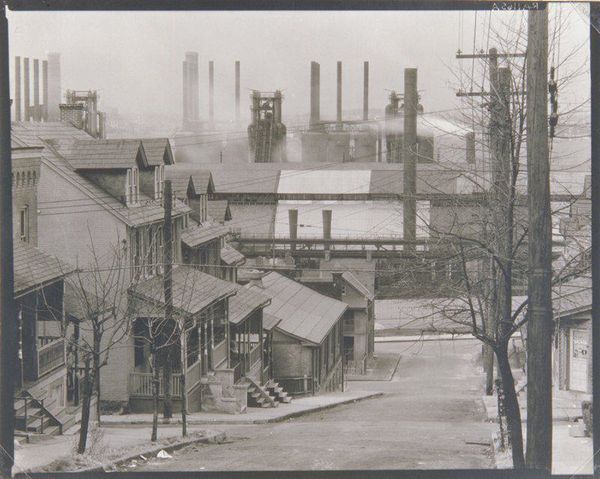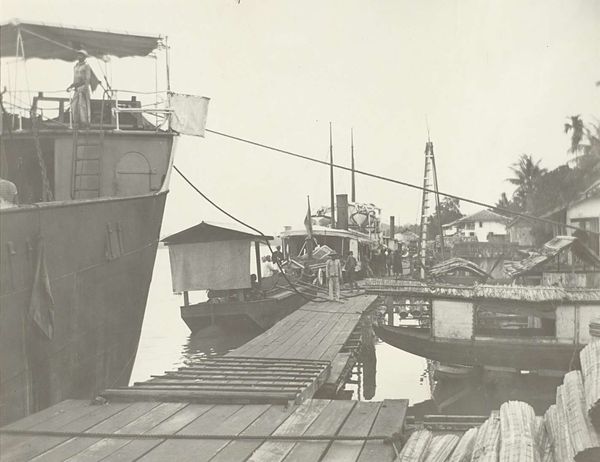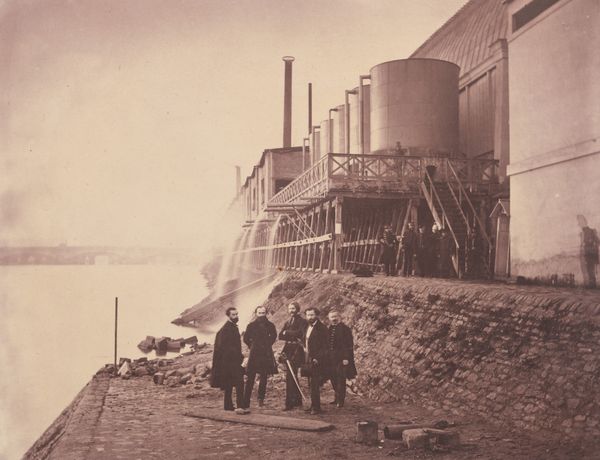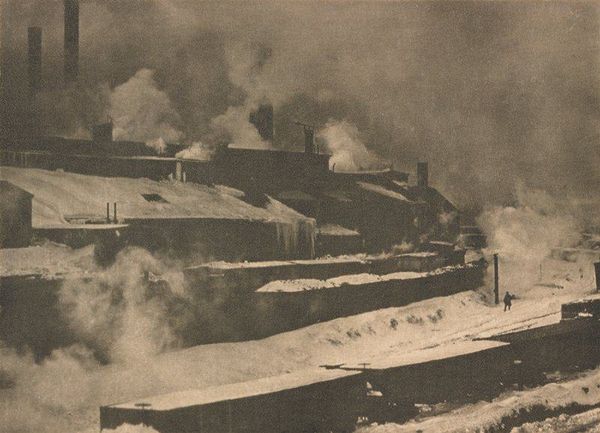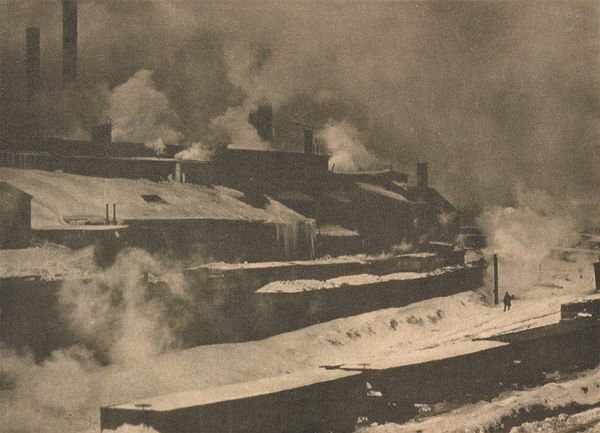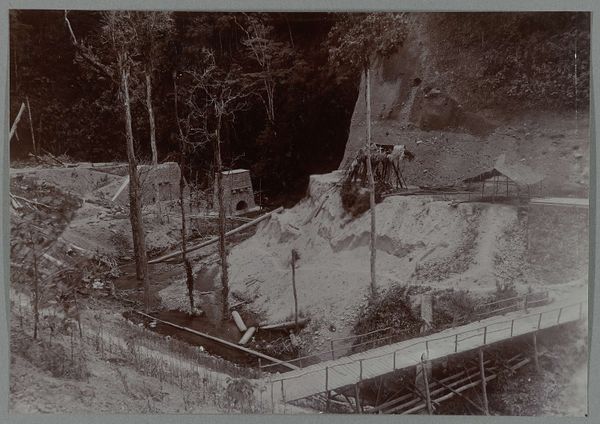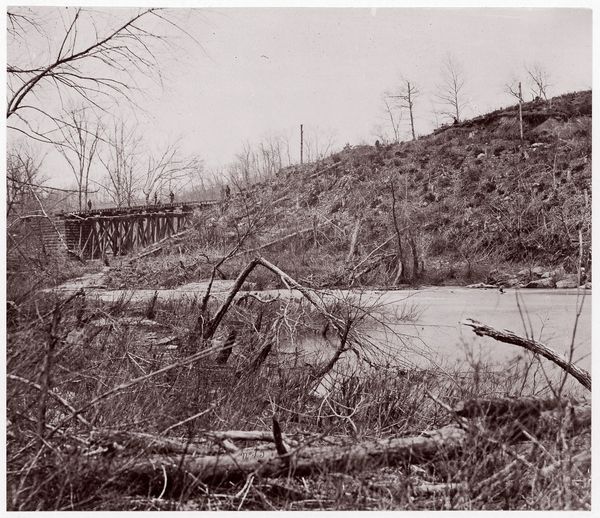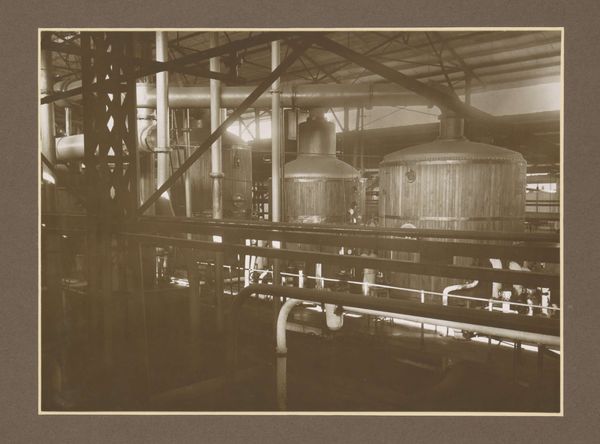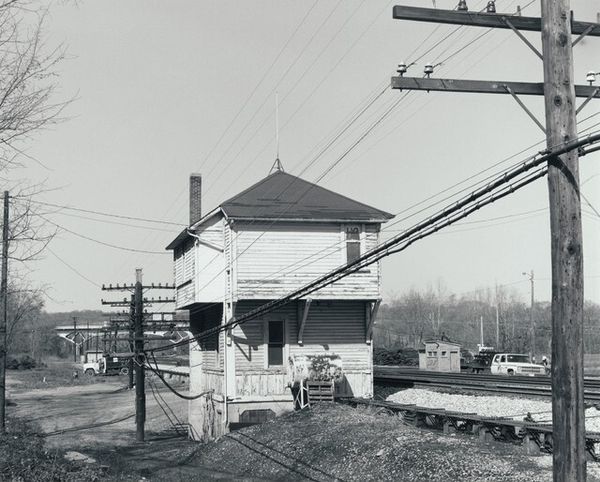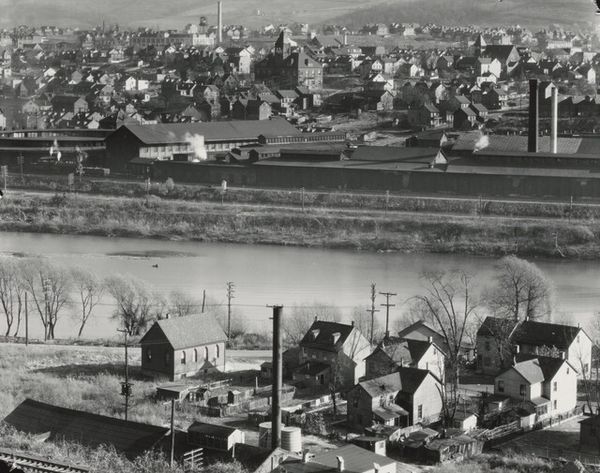
photography
#
still-life-photography
#
black and white photography
#
landscape
#
photography
#
black and white
#
monochrome photography
#
monochrome
#
digital-art
#
monochrome
Dimensions: image: 24 × 29.6 cm (9 7/16 × 11 5/8 in.) sheet: 26 × 32 cm (10 1/4 × 12 5/8 in.)
Copyright: National Gallery of Art: CC0 1.0
Curator: This arresting image is entitled "Cohoes Falls, Mohawk River, Cohoes, New York," realized in 1993 by James Welling. Editor: Whoa. Stark, right? It's all hard edges and then that ethereal, almost violent cascade in the background. Feels…industrial gothic. Curator: Indeed. Welling's strategic composition pits the brutal geometry of the industrial infrastructure – look at the building's severe lines, the skeletal power lines slicing through the frame – against the sublime spectacle of nature. Editor: Sublime, yes, in a curdled way. I mean, the falls are beautiful, undeniably, but they're…powering something, right? That building lurking in the foreground has its maw open, devouring nature. Gives me the chills. It's nature harnessed and somewhat despoiled at the same time. Curator: The photograph’s monochrome palette serves to heighten these tensions, eliminating the distractions of color. Note how it simplifies forms to their essential contrasts, creating a dialectic between light and shadow, organic and geometric. Editor: It also makes everything feel older, ghostlier, as though it’s some scene we came upon after everybody has moved on, after some catastrophe occurred. All that remains are this brutal apparatus that used nature up for power. But here's something interesting. Do you think the way he’s angled the shot creates the feel of surveillance? Like the artist is an outside observer. Curator: The photographer's strategic positioning invites, indeed, such readings, reinforcing themes of observation, control, and perhaps detachment. Welling compels us to reflect on how we engage with and represent our landscape through the tools of modern technology. Editor: The composition as an exploration. The artist behind the camera considering, perhaps critiquing humankind's clumsy impact on nature's drama. I get a disquieting harmony. Curator: That duality, indeed, prompts enduring reflection on our relationship with the natural world. Thank you. Editor: Likewise. Onwards!
Comments
No comments
Be the first to comment and join the conversation on the ultimate creative platform.


